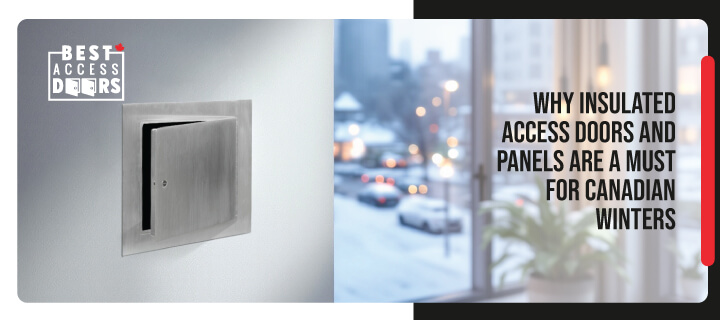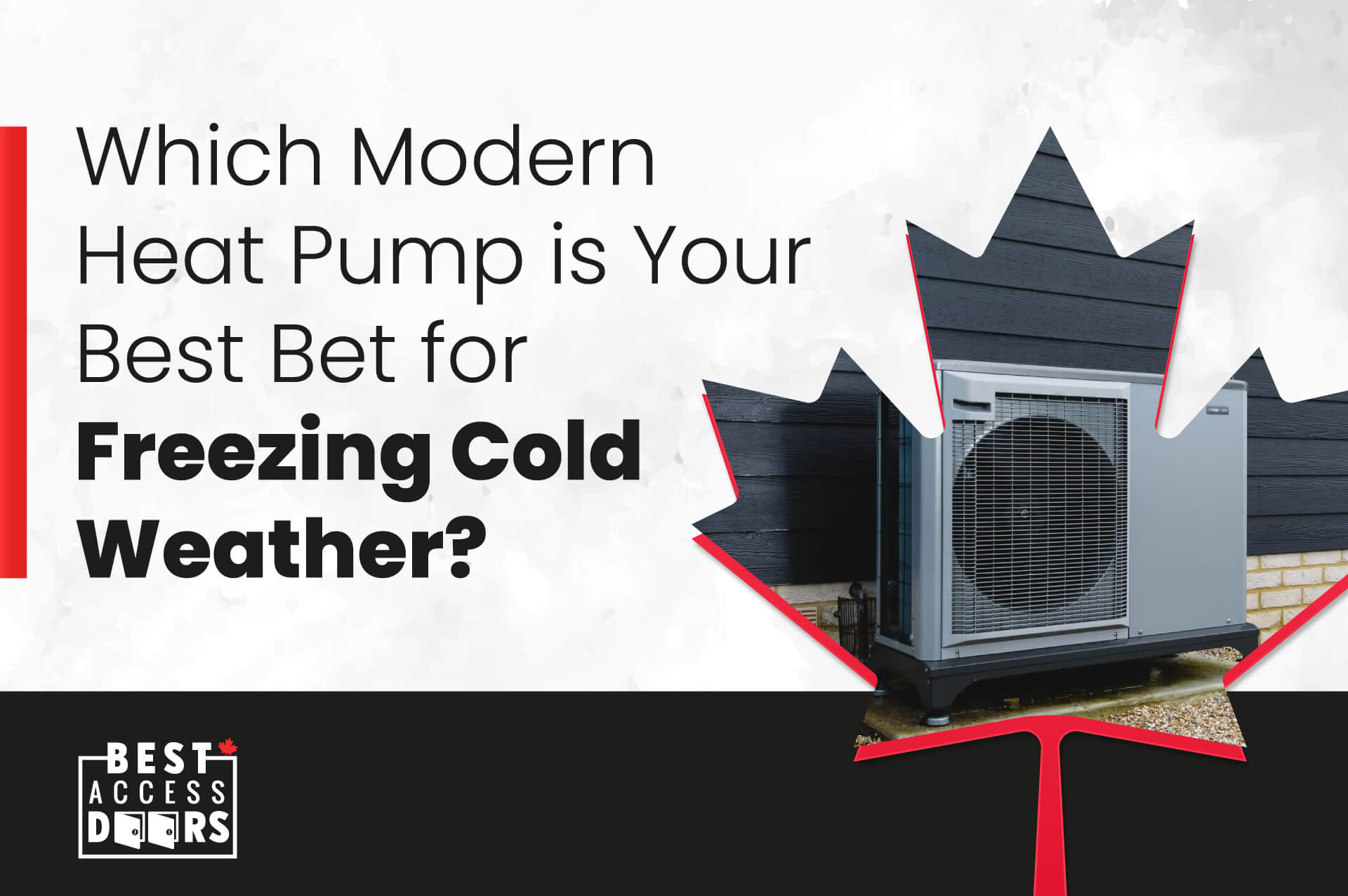Which Modern Heat Pump is Your Best Bet for Freezing Cold Weather? Posted by Best Access Doors Canada on 25th Jan 2023
Modern technology allows us to live and work in more comfortable temperatures irrelevant of the temperature outside of the building. Typically, some regions require heating and cooling systems installed in a single building that's adequate for temperature conditions in all seasons.
One of the solutions to provide both heating and cooling in a single device is by using a heat pump. This article will detail the basics of how a heat pump works and give some tips on which modern heat pump works in freezing conditions.
The Basics of a Heat Pump
Heat Pumps use refrigerants to transfer heat energy from one location to areas where the heat is needed. This central concept allows heat pumps to be energy efficient and the key to future sustainability. A typical air-to-air heat pump features a compressor, at least two heat exchangers (one located outside and the other inside), and a reversing valve.
When set to heating mode, the refrigerant in the heat pump transfers from the compressor to an indoor heat exchanger in a high-pressure and high-temperature vapor state. Cold air blows over the indoor heat exchanger, removing some of the thermal energy in the refrigerant and heating the room. Expansion valves turn the refrigerant into a low-temperature, low-pressure liquid/vapor mixture, allowing it to pick up heat energy from the outdoor heat exchanger. Finally, the refrigerant returns to the compressor, where the cycle repeats.
The refrigerant changes direction when set to cooling mode thanks to a reversing valve. In this mode, the heat energy gets picked up from the indoor space and dispensed in the outdoor unit. This mode allows the heat pump to work as a traditional ductless mini-split air conditioner.
Thanks to the reversing valve that allows the refrigerant to flow in both directions, heat pumps can work as cooling or heating device.
Traditional Heat Pump Problems
One of the first things you notice with the heat pump is that it relies on transferring heat instead of creating it directly from other sources. Heat pump struggles in cold weather and cannot work efficiently or at all because the heat pump cannot collect the heat from the outdoor unit and becomes unable to function as a heater in cold weather.
For this reason, you'd typically find heat pumps commonly used in more moderate climates or opt for a ground-source heat pump in more northern areas.
The Push For Modern Technology To Address These Problems
Despite these problems, the US Department of Energy (DOE) and many others believe in the potential that heat pumps can unlock. Since heat pumps run only on electricity, they don't produce any greenhouse gases as long as it receives a constant supply of green energy, unlike traditional gas-powered heaters. Moreover, the ability of heat pumps to have heating and cooling modes contained in a single unit ensures your indoor spaces remain at the perfect temperature regardless of the temperature outdoors.
The ongoing Residential Cold Climate Heat Pump Challenge spearheaded by the DOE encourages manufacturers to produce reliable and efficient cold climate heat pumps (CCHPs) optimized for two segments. The first segment is for 5°F (-15°C) operation, and the second segment focuses on -15°F (-26°C) operation. Currently, the project should be in the Field Testing phase, and you'll likely see many more cold climate heat pump manufacturers release their products in 2024.
Selecting A Heat Pump
The good news is you won't have to wait until 2024 to purchase a decent heat pump that works in colder climates. While your current selection may be limited, purchasing a heat pump that's perfect for freezing conditions and here's how it is possible.
Heat pumps sold in the US must come with an EnergyGuide label where you can verify the product's performance, allowing you to compare various products reliably. For air-to-air heat pumps, you can check the Heating Season Performance Factor (HSPF) to measure how much heat the product produces over an average heating season. To get the best heat pump, look for products with the highest HSPF compatible with your current building and budget.
Additionally, you can also rely on the COP (Coefficient Of Performance) value of a heat pump. The COP value represents how much heat you can produce from the electricity it consumes. Traditional heaters have a COP value of 1, meaning 100% of electricity becomes heat. However, it is possible to find heat pumps with a COP of 2.6 at temperatures as cold as 5°F (-15°C), which means the heat pump will work at 260% efficiency even in below-freezing temperatures.
The Northeast Energy Efficiency Partnerships (NEEP) also maintains an active database for heat pumps that perform well in the cold. You can use it as one of your references on the search for heat pumps that work below-freezing temperatures.
Having the Best Access Door For Your Heat Pump
Modern technology allows heat pumps to overcome traditional problems and become one of the best heating systems for cold climates. Heat pumps have much high-pressure piping, and you'll want to have these protected by a reliable access door.
When it comes to the accessibility of wall-hidden utilities and unparalleled protection, you'll want insulated wall-access doors installed in your building. Additionally, the insulation found on these access doors ensures the equipment behind your heat pump is less adverse to the surrounding temperature.
Contact Best Access Doors Canada Today!
Best Access Doors Canada features only the highest-quality products from North America's most trusted manufacturers. We know that some projects have unique requirements, and you can get a custom access door made just for that occasion.
We're always excited to hear from you! Contact our product experts at (800) 679-3405 to get the latest information on all our products.






